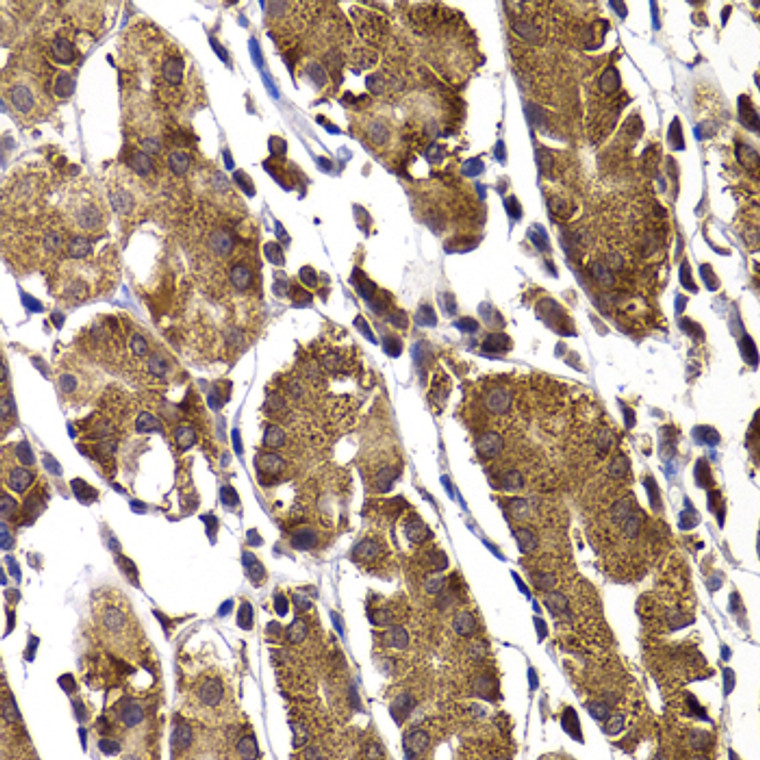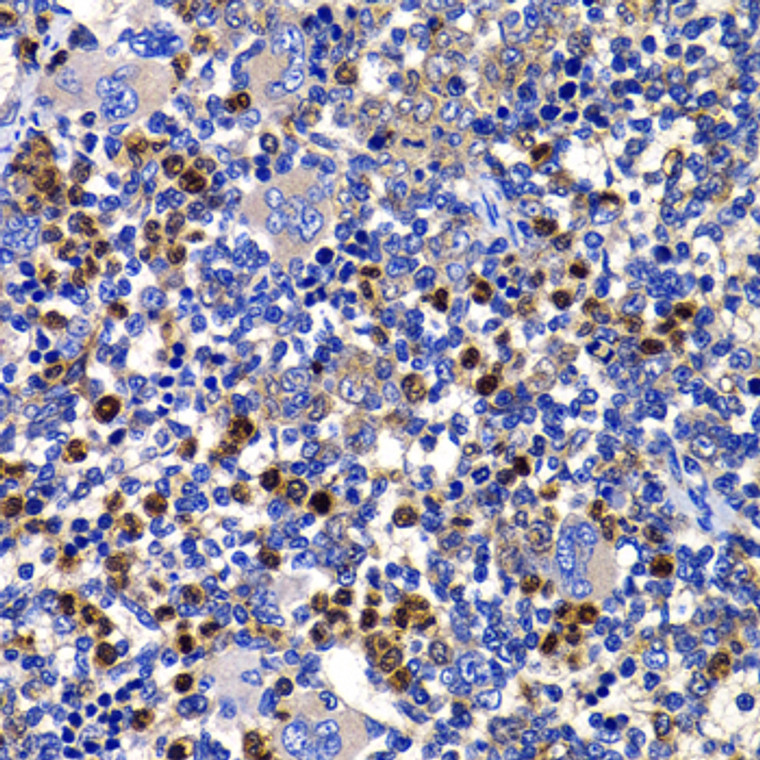| Host: |
Rabbit |
| Applications: |
WB/IHC/IF/IP |
| Reactivity: |
Human/Mouse/Rat |
| Note: |
STRICTLY FOR FURTHER SCIENTIFIC RESEARCH USE ONLY (RUO). MUST NOT TO BE USED IN DIAGNOSTIC OR THERAPEUTIC APPLICATIONS. |
| Short Description: |
Rabbit polyclonal antibody anti-STAMBP (100-270) is suitable for use in Western Blot, Immunohistochemistry, Immunofluorescence and Immunoprecipitation research applications. |
| Clonality: |
Polyclonal |
| Conjugation: |
Unconjugated |
| Isotype: |
IgG |
| Formulation: |
PBS with 0.02% Sodium Azide, 50% Glycerol, pH7.3. |
| Purification: |
Affinity purification |
| Dilution Range: |
WB 1:500-1:2000IHC-P 1:50-1:200IF/ICC 1:50-1:100IP 1:20-1:50 |
| Storage Instruction: |
Store at-20°C for up to 1 year from the date of receipt, and avoid repeat freeze-thaw cycles. |
| Gene Symbol: |
STAMBP |
| Gene ID: |
10617 |
| Uniprot ID: |
STABP_HUMAN |
| Immunogen Region: |
100-270 |
| Immunogen: |
Recombinant fusion protein containing a sequence corresponding to amino acids 100-270 of human STAMBP (NP_998787.1). |
| Immunogen Sequence: |
FPKAEELKAELLKRYTKEYT EYNEEKKKEAEELARNMAIQ QELEKEKQRVAQQKQQQLEQ EQFHAFEEMIRNQELEKERL KIVQEFGKVDPGLGGPLVPD LEKPSLDVFPTLTVSSIQPS DCHTTVRPAKPPVVDRSLKP GALSNSESIPTIDGLRHVVV PGRLCPQFLQL |
| Tissue Specificity | Ubiquitously expressed. |
| Post Translational Modifications | Phosphorylated after BMP type I receptor activation. Ubiquitinated by SMURF2 in the presence of RNF11. |
| Function | Zinc metalloprotease that specifically cleaves 'Lys-63'-linked polyubiquitin chains. Does not cleave 'Lys-48'-linked polyubiquitin chains. Plays a role in signal transduction for cell growth and MYC induction mediated by IL-2 and GM-CSF. Potentiates BMP (bone morphogenetic protein) signaling by antagonizing the inhibitory action of SMAD6 and SMAD7. Has a key role in regulation of cell surface receptor-mediated endocytosis and ubiquitin-dependent sorting of receptors to lysosomes. Endosomal localization of STAMBP is required for efficient EGFR degradation but not for its internalization. Involved in the negative regulation of PI3K-AKT-mTOR and RAS-MAP signaling pathways. |
| Protein Name | Stam-Binding ProteinAssociated Molecule With The Sh3 Domain Of StamEndosome-Associated Ubiquitin Isopeptidase |
| Database Links | Reactome: R-HSA-5689901 |
| Cellular Localisation | NucleusMembranePeripheral Membrane ProteinCytoplasmEarly Endosome |
| Alternative Antibody Names | Anti-Stam-Binding Protein antibodyAnti-Associated Molecule With The Sh3 Domain Of Stam antibodyAnti-Endosome-Associated Ubiquitin Isopeptidase antibodyAnti-STAMBP antibodyAnti-AMSH antibody |
Information sourced from Uniprot.org
12 months for antibodies. 6 months for ELISA Kits. Please see website T&Cs for further guidance










